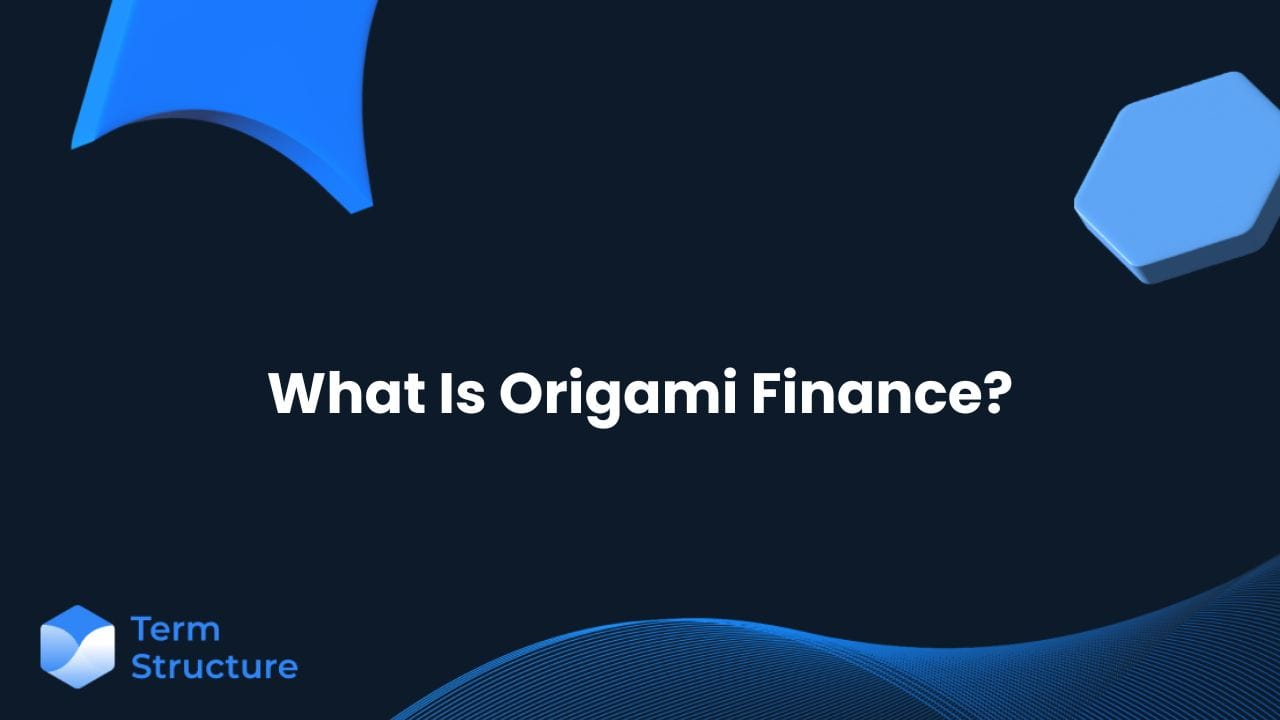What Is Origami Finance?

Origami Finance is an innovative automated leverage protocol on Arbitrium, designed to streamline the process of engaging with yield-bearing tokens (YBT). By fully integrating with third-party lenders, Origami aims to maximize capital efficiency while minimizing risks associated with liquidation and bad debt.
Challenges Addressed by Origami Finance
DeFi users seeking to increase their exposure to yield-bearing tokens faced a cumbersome process. They would need to manually deposit tokens into a money market, borrow against them, and then swap the borrowed funds to generate more of the same collateral. This "folding" process was not only tedious but also risky, requiring constant monitoring of health factors to avoid liquidation due to market volatility or high interest rates. Origami Finance addresses these challenges by automating the entire process, allowing users to achieve leveraged exposure with minimal effort and risk.
Solutions Offered By Origami Finance
Origami Finance simplifies the folding process through its Leveraged Origami Vaults (lov). Users can create leveraged positions in yield-bearing tokens with just one click, eliminating the need for ongoing position management and health factor monitoring. The protocol automatically maintains a high loan-to-value (LTV) ratio, optimizing returns while safeguarding against liquidation risks.
The integration with top lending platforms like Morpho Finance and Spark Finance ensures that users have access to deep liquidity. This setup allows Origami to borrow funds efficiently, which are then used to enhance users' positions in yield-bearing tokens. As a result, users can achieve significant leverage—up to 10x or more—without the typical complexities involved in manual management.
Maximizing Your Benefits with Origami
Utilize Leveraged Origami Vaults (lov)
Origami Finance offers Leveraged Origami Vaults (lov) that automate the process of gaining exposure to yield-bearing tokens (YBT). By depositing your assets into these vaults, you can benefit from automated leverage without the need for active position management. This means you can focus on earning yields while the protocol handles borrowing and repayment to maintain optimal exposure levels.
2. Take Advantage of One-Click Leverage
The platform’s one-click leverage feature simplifies the process of folding your investments. Users can quickly create leveraged positions in YBTs with minimal effort. This automation reduces the risks associated with manual management, such as liquidation due to market fluctuations. By using this feature, you can efficiently manage your investments and enhance your yield potential.
3. Participate in Yield Farming Strategies
Engage in yield farming by depositing into various vaults that support different YBTs. Each vault is designed to optimize returns based on the underlying asset's performance. By diversifying your deposits across multiple vaults, you can spread risk and potentially increase overall returns.
4. Monitor Market Conditions
While Origami automates many aspects of leverage management, it’s still essential to stay informed about market conditions. Changes in interest rates or market volatility can impact your yields and the health of your positions. Keeping an eye on these factors will help you make informed decisions about when to adjust your strategies.
5. Leverage Deep Liquidity Integration
Origami Finance is integrated with top lending protocols like Morpho Finance and Spark Finance, providing access to deep liquidity. This integration allows for efficient borrowing and enhances your ability to maintain high loan-to-value (LTV) ratios without excessive costs. Ensure you take advantage of this feature to maximize capital efficiency.
6. Engage with Community and Governance
Participating in community discussions and governance decisions can provide insights into upcoming features or changes within the platform. Engaging with other users may also reveal strategies that could enhance your own investment approach.
7. Earn Ori Points through Deposits
Origami has introduced an incentive program where users earn Ori points for depositing into vaults during specific campaign periods. These points may translate into rewards or benefits within the ecosystem, so be sure to participate actively during these campaigns to maximize your returns.
Advantages And Disadvantages
Pros of Origami Finance
- Automated Leverage Management: Origami Finance simplifies the process of achieving leveraged exposure to yield-bearing tokens (YBT). Users can create leveraged positions with just one click, eliminating the need for constant health factor monitoring and manual position management. This automation reduces the complexity typically associated with leverage in DeFi.
- Capital Efficiency: The protocol maximizes capital efficiency by allowing users to maintain high loan-to-value (LTV) ratios without the risks of liquidation that often accompany traditional leverage strategies. This means users can potentially earn higher returns on their investments while minimizing their exposure to market fluctuations25.
- Integration with Third-Party Lenders: Origami is fully integrated with leading lending protocols, providing access to deep liquidity. This integration enhances borrowing efficiency and allows users to capitalize on favorable market conditions without being hindered by liquidity constraints.
- Yield-Bearing Token Exposure: Users can gain exposure to yield-bearing tokens while leveraging their investments. This ability allows for enhanced returns through yield farming strategies, potentially increasing overall profitability compared to traditional investment methods.
- User-Friendly Interface: The platform is designed for ease of use, making it accessible even for those who may not have extensive experience in DeFi. The streamlined process allows users to engage in complex financial strategies without needing deep technical knowledge.
Cons of Origami Finance
- Market Volatility Risks: While automation reduces some risks, users are still exposed to market volatility. Sudden price changes can affect leveraged positions significantly, leading to potential losses if the market moves unfavorably.
- Liquidation Risks: Although Origami aims to minimize liquidation risks through its automated systems, there remains a possibility that extreme market conditions could lead to liquidations if collateral values drop sharply or if interest rates rise unexpectedly.
- Dependence on Third-Party Protocols: Origami's performance is closely tied to the lending protocols it integrates with, such as Morpho and Spark Finance. Any issues or changes within these third-party platforms could directly impact Origami's functionality and user experience.
- Smart Contract Vulnerabilities: Like all DeFi protocols, Origami is subject to inherent risks associated with smart contracts. Bugs or vulnerabilities in the code could lead to significant financial losses for users if exploited by malicious actors.
- Experimental Nature of Products: As a relatively new entrant in the DeFi space, Origami's products are considered experimental. Users should be cautious and fully understand the risks involved before participating, as there is potential for total loss of funds due to unforeseen issues.
Conclusion
Origami Finance presents a compelling option for users looking to engage in automated leverage within the DeFi ecosystem. Its user-friendly interface and automated processes offer significant advantages, particularly for those seeking capital efficiency and exposure to yield-bearing tokens. However, potential users must remain aware of the inherent risks associated with market volatility, liquidation, and smart contract vulnerabilities. As always in the rapidly evolving world of decentralized finance, thorough research and risk assessment are crucial before diving into any investment strategy with Origami Finance.

